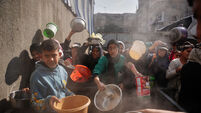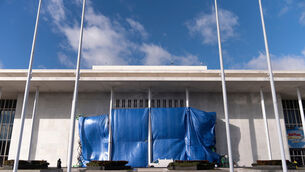Iran mourns 115 people killed in plane crash
Iran today mourned the 115 people killed when a military plane crashed into an apartment building in Tehran, with the media running tributes to the many journalists on board and relatives criticising the government.
The C-130 plane, a four-engine turbo-prop, took off yesterday for southern Iran where the journalists were going to cover military manoeuvres. It suffered engine failure and was returning to make an emergency landing at Tehran’s Mehrabad airport when it lost altitude. It hit a 10-storey building in the Azari residential district, setting it on fire, and crashed to the ground.














